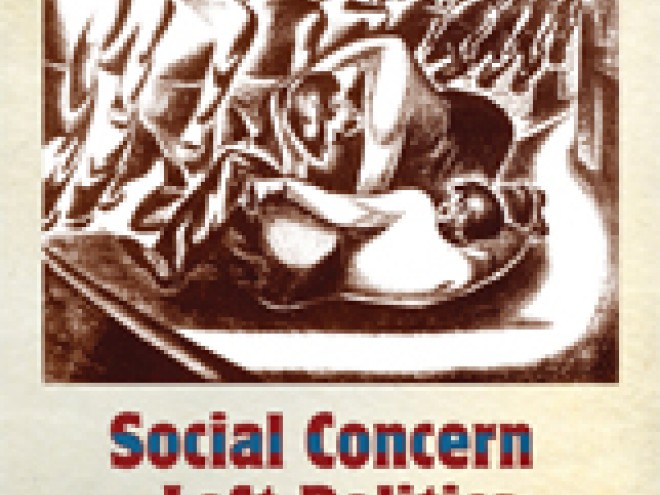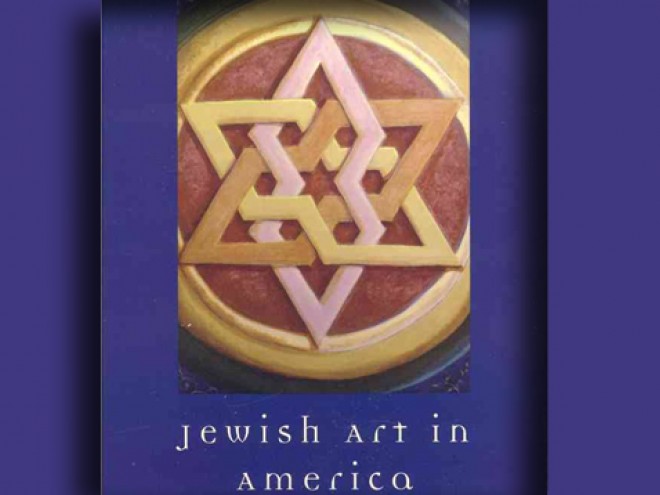Earlier this week, Matthew Baigell wrote about anti-Semitic images of Jews in American humor magazines and social concern and left politics in Jewish American art. He is the author of the recently published book Social Concern and Left Politics in Jewish America Art, 1880 – 1940 and has been blogging here all week for Jewish Book Council’s Visiting Scribeseries.
 These are great times for those of us who support, encourage, and enjoy looking at art with Jewish themes. Perhaps never before are so many artists all over America finding inspiration in the basic texts of the religion — the Torah, the Talmud, kabbalah, and the daily and high holiday prayer books. The artists do not just illustrate these texts in traditional ways but challenge them, especially feminist artists opposed to male patriarchy, and find personal themes and subject matter that allow for personal flights of fancy.
These are great times for those of us who support, encourage, and enjoy looking at art with Jewish themes. Perhaps never before are so many artists all over America finding inspiration in the basic texts of the religion — the Torah, the Talmud, kabbalah, and the daily and high holiday prayer books. The artists do not just illustrate these texts in traditional ways but challenge them, especially feminist artists opposed to male patriarchy, and find personal themes and subject matter that allow for personal flights of fancy.
Based on several factors including Israeli military victories in 1967 and 1973, the liberation movements of the 1960s (civil and gay rights, the women’s movement), and the spiritualism within the Jewish Renewal movement, Jewish artists began to explore openly and aggressively their religious and cultural heritage. The results have been astonishing. These artists, who have matured in an environment largely free from overt anti-Semitism, belong to the generations born in the 1930s and after, the first generations of artists to feel comfortable as Jews and as assimilated Americans.
No longer worrying about coming out of the closet, as it were, as Jewish artists, they have revolutionized Jewish American art. Their styles range from realistic to abstract. Some employ commix imagery. Many would like their art to contribute to a sense of “tikkun olam,” or repair of the world, not a bad idea wanting to contribute to world betterment in the market-driven art world.
Some artists have created narrative series, a new development in Jewish American art. Examples abound. California-based Ruth Weisberg created a fourteen-panel series titled “Sisters and Brothers” in 1994 in which she explored disruptive family relationships between Leah and Rachel and Isaac and Esau in order to stress the relevance of the Bible as a contemporary source of moral values. In one scene, we see Jacob asking for is father Isaac’s blessing by taking the place of Esau, his older brother.

For the last ten-plus years, David Wander has created his versions of the Five Scrolls — Esther, Ruth, Song of Songs, Lamentations, and Ecclesiastes. Esther, in the most commix version of all, is a combination of biblical text and midrashic legend ending in the return of the Israelites to Jerusalem.

Siona Benjamin, born into the Bene Israel community in India and now a New Jersey resident, portrayed the story of Queen Esther in the ancient Persian-Indian style of miniatures. Shown here is one of her portraits of Lilith, in legend a woman of independent mind who was Adam’s first wife.

Michigan-based Lynn Avadenka added short poems to her presentation of the matriarchs. New York-based Tobi Kahn created individual abstract images of the matriarchs on the backs of four chairs used for baby-naming rituals. Jill Nathanson created four abstract paintings expressionist in mood in which she tried to suggest what Moses might have felt when he went up Sinai a second time to receive the Tablets and what Nathanson herself might have felt had she also gone up Sinai to talk directly to God.
Whatever their degrees of religiosity, the artists want to share their very personal feelings with their viewers and the different ways in which they relate to the ancient texts. In effect, they are exploring Judaism in non-traditional, sometimes even idiosyncratic, but very committed, individualized ways. Each is a party of one engaged in his or her own personal quest. The ancient texts, therefore, are basically launching pads for their own unique visions located firmly within a Jewish context.
Matthew Baigell is Professor Emeritus in the Department of Art History at Rutgers University. He is the author of numerous books, including American Artists, Jewish Images, and Jewish Art in America: An Introduction. His most recent book is Social Concern and Left Politics in Jewish America Art, 1880 – 1940.
Related Content:
- Tobi Kahn: Sacred Spaces for the 21st Century edited by Ena Giurescu Heller
- 50 Jewish Artists You Should Know by Edward van Voolen
- Arise! Arise! Deborah, Ruth and Hannah by Debra Band
Matthew Baigell is professor emeritus in the department of art history at Rutgers University. He is the author, editor, and coeditor of over twenty books on American and Jewish American art. His most recent book is The Implacable Urge to Defame: Cartoon Jews in the American Press, 1877 – 1935.


